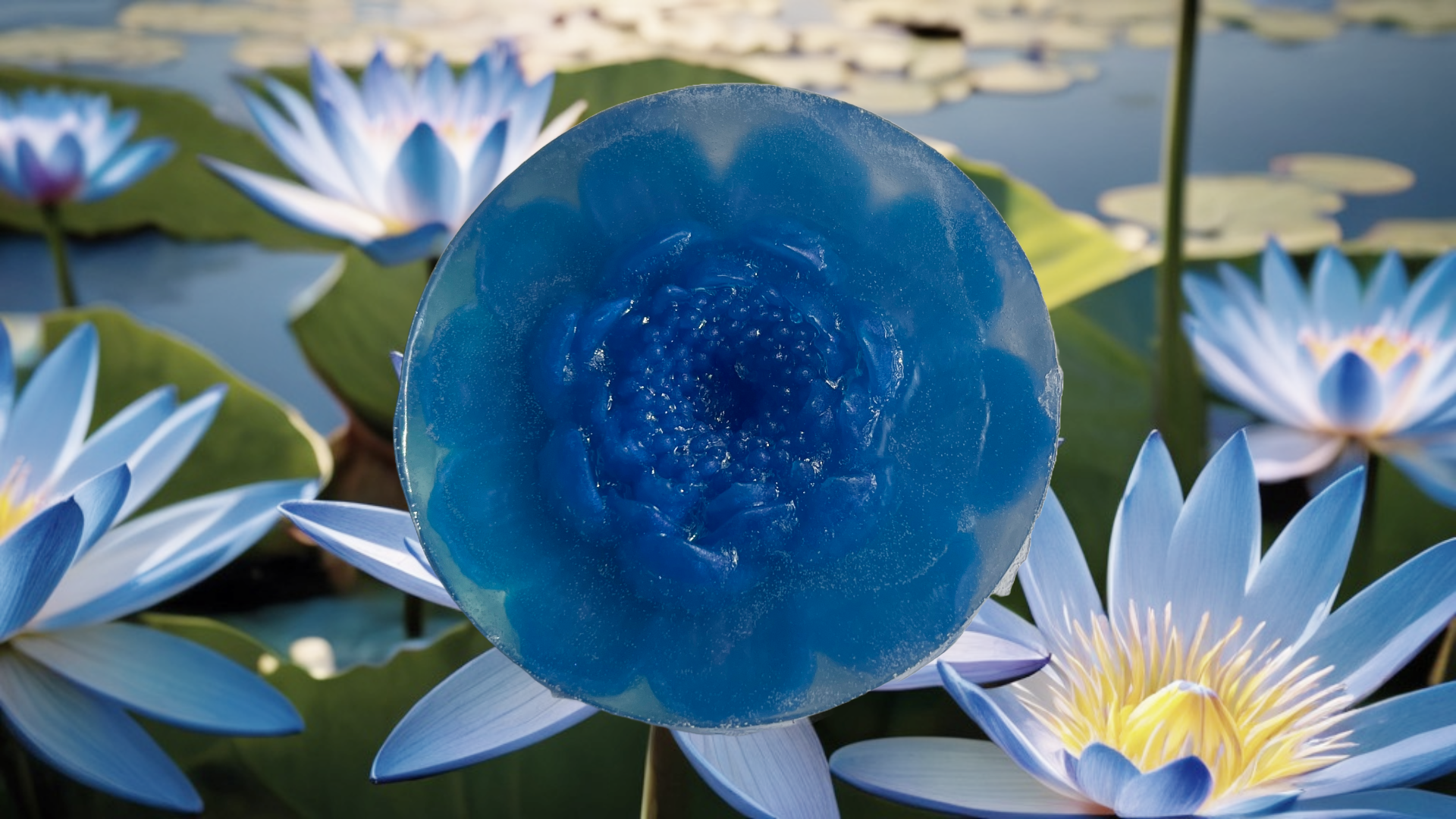
When shopping for soap, many people assume that the only difference between pretty, decorative soap and regular soap is appearance. But is that really the case? Do beautifully designed soaps offer more benefits than their plain counterparts, or are they just for show?
At Anthousai Apothecary, we believe that soap should be both beautiful and functional. Our transparent, sorbitol-based soaps offer a stunning visual appeal while also being hydrating, gentle, and eco-friendly. In this article, we’ll break down the key differences between pretty soap and regular soap—and why choosing a well-made, decorative soap can actually be better for your skin and the environment.
What is Regular Soap?

Traditional or regular soap is often mass-produced and designed for one purpose: cleansing. These soaps typically contain:
- Surfactants (like Sodium Lauryl Sulfate) to break down dirt and oil.
- Water and fatty acids (like tallow or palm oil) for structure.
- Preservatives and stabilizers to increase shelf life.
- Artificial fragrances and dyes to make them smell and look appealing.
While these ingredients effectively cleanse, they can also be harsh on the skin, stripping away natural oils and leaving it dry or irritated—especially for those with sensitive or dry skin.
Downsides of Regular Soap:
❌ Can be drying due to high pH.
❌ Often contains synthetic fragrances that may irritate skin.
❌ Mass-produced formulas may lack skin-nourishing ingredients.
❌ Typically comes in plastic packaging, contributing to waste.
What is Pretty Soap?
Pretty soap isn’t just about looks—it often has more thoughtfully chosen ingredients that benefit the skin while also being visually appealing. High-quality decorative soaps, like those from Anthousai Apothecary, are made with gentle, hydrating ingredients and crafted with care.
These soaps often feature:
- Sorbitol or glycerin for added moisture.
- Natural oils and butters for nourishment.
- Essential oils and botanical extracts for a natural scent.
- Handcrafted designs that make them feel like a luxury.
Because pretty soaps are often made in small batches with better ingredients, they cleanse without stripping moisture, leaving skin feeling soft, hydrated, and refreshed.
Benefits of Pretty Soap:
✅ Hydrating formulas with humectants like sorbitol and glycerin.
✅ Gentler on the skin, especially for sensitive types.
✅ More eco-friendly when made with natural ingredients and sustainable packaging.
✅ Visually appealing—great for gifts or bathroom decor.
Pretty Soap vs. Regular Soap: Breaking Down the Differences
| Feature | Regular Soap | Pretty Soap |
|---|---|---|
| Ingredients | Basic surfactants, artificial fragrances | Natural humectants, botanical extracts |
| Moisturizing? | Often drying due to high pH | Hydrating with sorbitol/glycerin |
| Scent | Synthetic fragrances | Essential oils/natural scents |
| Eco-Friendliness | Often comes in plastic packaging | Usually uses biodegradable wrapping |
| Visual Appeal | Plain, utilitarian | Artistic, decorative designs |
| Best For | General cleansing | Gentle cleansing, hydration, and aesthetics |
The Science of Pretty Soap: Do Ingredients Matter?
The ingredients used in pretty soap aren’t just for aesthetics—they affect how the soap interacts with your skin. Here’s why ingredients matter:
1. Sorbitol & Glycerin: The Hydration Heroes
Many decorative soaps, including Anthousai Apothecary’s transparent soaps, use sorbitol, a plant-based humectant similar to glycerin. These ingredients:
- Attract moisture to the skin.
- Prevent over-drying after cleansing.
- Give the soap a clear, glass-like appearance.
In contrast, regular soaps often lack humectants, making them more likely to leave skin feeling tight and dry.
2. Natural Oils vs. Harsh Detergents
Regular soaps often rely on Sodium Lauryl Sulfate (SLS) or similar surfactants to remove dirt and oil. While effective, these ingredients can be too harsh, leading to:
- Dry, itchy skin
- Stripping away natural oils
- Potential irritation for sensitive skin
Pretty soaps, especially those from eco-conscious brands, replace harsh detergents with plant-based oils and milder cleansers like Sodium Cocoyl Isethionate, which cleans without disrupting the skin’s barrier.
3. pH Levels: Why It Matters for Your Skin
Regular soaps tend to have a higher pH (9-10), which can disrupt your skin’s natural balance, leading to dryness and irritation.
- Pretty soaps often have a lower, skin-friendly pH (5-7), keeping your skin moisturized and healthy.
Sustainability: Another Key Difference
Beyond skincare benefits, pretty soaps are often more sustainable than regular soaps. Many brands prioritize:
🌱 Eco-friendly packaging – Anthousai Apothecary’s soaps are wrapped in Biolefin biodegradable shrink-wrap, breaking down faster than plastic.
🌱 Biodegradable ingredients – Unlike synthetic detergents, plant-based soaps break down easily in the environment.
🌱 Handcrafted production – Small-batch soaps reduce waste compared to mass production.
Regular soaps, especially commercial brands, often use excessive plastic packaging and synthetic chemicals that may not be eco-friendly.
So, Is Pretty Soap Worth It?

Absolutely! Choosing a high-quality, decorative soap isn’t just about aesthetics—it’s about using better ingredients, being kinder to your skin, and supporting sustainability.
Here’s why Anthousai Apothecary’s pretty, transparent soaps are the best of both worlds:
✨ Hydrating sorbitol-based formula keeps skin soft.
✨ Beautiful, jewel-like transparency makes them a stunning addition to your bathroom.
✨ Biodegradable packaging means less environmental impact.
✨ Gentle cleansing with plant-derived ingredients.
When you upgrade from regular soap to pretty soap, you’re not just adding beauty to your routine—you’re investing in healthier skin and a healthier planet.
Final Thoughts
While regular soap gets the job done, pretty soap offers a superior experience—from better ingredients to more thoughtful, sustainable packaging. So why settle for dull, drying soap when you can have something that’s both beautiful and beneficial?
If you’re ready to experience luxurious, eco-friendly soap, explore Anthousai Apothecary’s transparent soap collection today. Because soap should be as pretty as it is practical!
